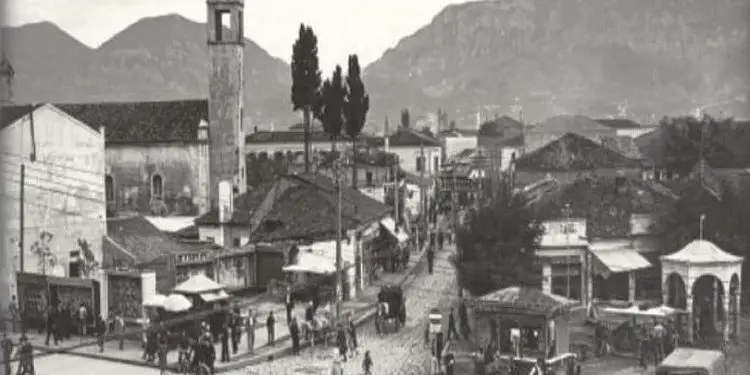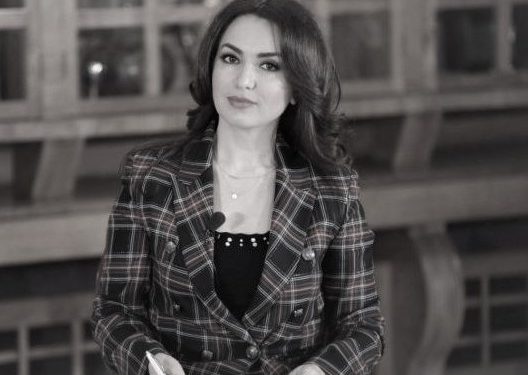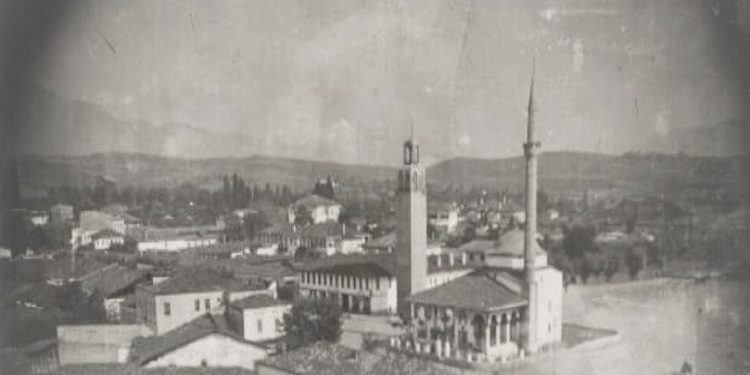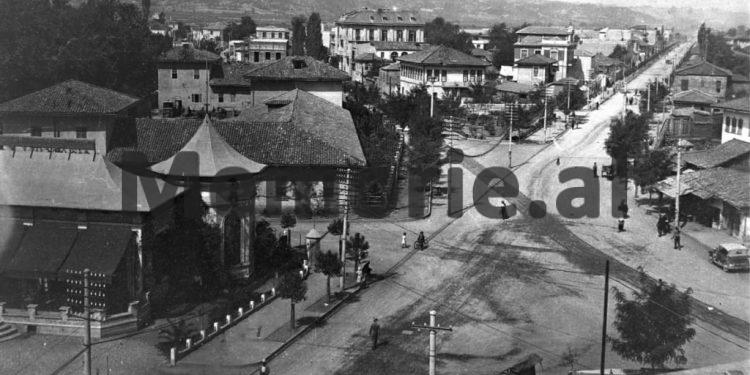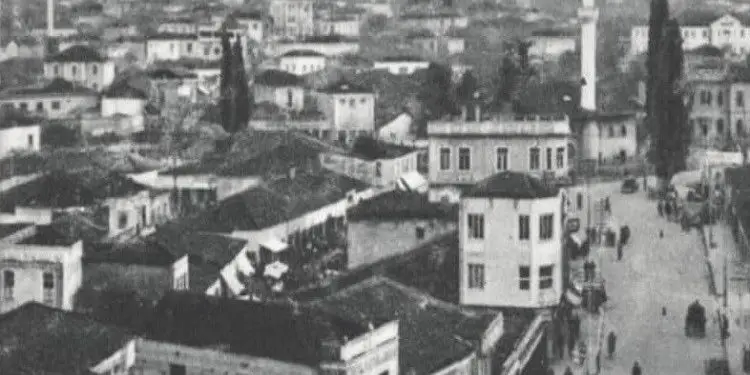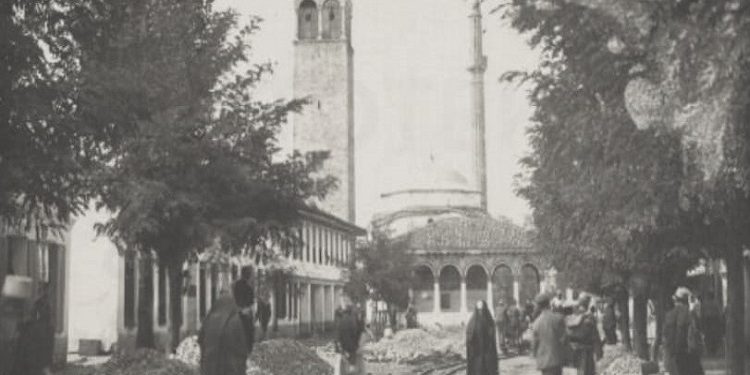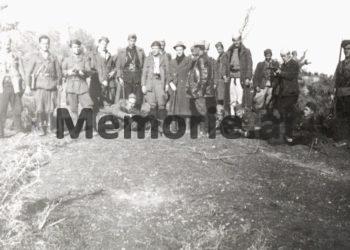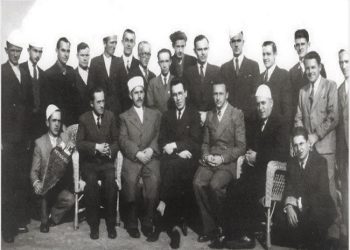By Belina BUDINI
Tabak, – The family that gave the name to the bridge and the mosque –
Memorie.al / Pinjollet e Tabakke, return to the old village, where there used to be Teqeja e Tabakke, Tyrbja e Tabakke, Hani i Tabakke and the century-old Selvia, in the courtyard of the adobe houses, which have all been demolished. The story of the family related to the Bridge and the Mosque of Tabake, told by today’s pinjolles. The Plan of Tabake, the Bridge of Tabake, the century-old cypress of Tabake, the Inn of Tabake, the Square of Tabake, the Teqja of Tabake, the Turbja of Tabake, the Mosque of Tabake…! Apart from the bridge and the mosque, all the other toponyms of Tabaki have been buried with a fallout of the plan for new constructions, from the 60s to the 90s.
But the “Tabaket” brand in Tirana has not been lost. We even found the Tabaks’ remains in the lands of the ancestors, where they have just been reunited. Not far from Tabake Bridge and next to the Mosque of the same name.
Exactly where the old Tyrbja and Teqeja used to be. The tabaks have restored the former mahalla, and even the shops, which of course are no longer called Tabakhane. The heirs of the well-known name still keep the past and the past in their memories.
A part of these, simply in the form of word of mouth, not written down anywhere. But one of Tabaki’s painters, has immortalized the old houses, the tyrban, the teqe, the cypress, in some drawings from 50 years ago and preserves them with fanaticism, as visual evidence of the Tabaki’s old mahalla.
Her name is Besim Tabaku and she is a sculptor and teacher at the Artistic High School. In addition to the charts of the time, when he was a lyceum himself, he keeps a mountain of oral memories about his family’s roots.
In a diary for internal use, by members of the Tabaku family, Besimi has written a good part of these memories. On the other hand, Kasem Tabaku, 68 years old, the oldest member of the family, keeps it all in his memory.
As well as the other pinjols, Bashkimi, Burhani, Dhurata. Everyone recounts something from their memories of the family, completing the picture down to the details. ]
Word of mouth about the name Tabaku, which took its name from Sheshi i Tabakė and from there, it was the Tabaku family, who in turn gave the name to the Mosque. The history of Tabaki’s inn, tyrbe and teqe, as well as the centuries-old cypress, none of which has survived to this day.
The taps and pipes that the Tabaks have discovered recently, during the demolition for the construction of the palace where all the sons of Abdyl Tabak are now settled together and a little further on, the heirs of Selim Tabak, both sons of Sheh Kasem Tabak, one of the most glorious ancestors of the Tabaku family and religious with a high title at that time.
In Tabakeve village, Kasemi, the 68-year-old who worked as a radio technician in a military unit in Tirana, lived in the land of his ancestors, even during the communist regime.
Although his house was approached twice by plans for new palace constructions, he was able to preserve a part of it, living by himself in a single room, left over from the adobe house, while the palace was built.
The other trays were moved and only a part got a home, in the new buildings that were built where the adobe houses of the landowners were before.
Only one well remains from the old house, which they buried inside the walls of the new constructions that the Tabaks recently built. Kasemi lives in a new two-story private house, together with his daughters-in-law, sons and grandchildren.
He remembers well that where a multi-story building is now built, there used to be Tabak Square. There was also a big inn right there. But Hani i Tabakke, was smaller and existed according to Kasemi, until 1953.
“The whole country was an important center, especially for the processing and drying of hides”, Kasemi says. His grandfather, Sheh Kasem Tabaku, was the head of Teqe e Tabakke and after his death, he was buried right in the Tomb of Tabakke, where 20 eyes, from the first Tabakke, were also buried.
Only the grave of Sheh Kasem Tabak has been moved to Tufina, during the conversion of the old mahalla into a construction site for new buildings. The remains of other predecessors have been dissolved together with the tomb, under the built palaces. As well as Teqeja, which was demolished in the 60s.
At this time, the old cypress was also removed, which, as one of the Tabaks’ apprentices, Bashkim Tabaku, (lecturer of mathematics at the Agricultural University of Kamza), remembers, was as high as the minaret of the mosque and “in its extremely thick trunk, I counted myself once, 1200 rings, plus or minus, which indicate the very old age of the cypress, which was called at that time; The cypress of Tabake”, – says Bashkimi.
Even Besimi, the sculptor of Tabakke, tells about the cypress which he preserved in the drawings of the time when he was in high school, as well as the houses made of adobe, connected with wooden poles. There he fixed the turbe and the teke, which we talked about.
Besimi says that exactly there, the shops or Tanneries of the first were located, which were mainly engaged in agriculture in the surrounding lands, for which they devised an irrigation system, but also engaged in the processing and drying of hides. The former mahalla of Tabake, according to the stories of the pinjolles, came out on the bridge of Tabake.
“Back then, the Lana River did not meander in the same bed as it does today. The Tabake bridge was quite deep and under it, the stream of Lana passed, which came near our village. It seems that members of our family also contributed to the construction of this bridge, as well as old residents of the area. But since she was known as our mahalla, then we believe that this is how the bridge and, on the other hand, Rrapi t Tabakeki, as well as the Mosque, has remained its name”, says Besimi.
According to the spokesperson, the Tabaks claim to find traces in Tirana since 500 years ago. The last name Tabaku is explained in relation to the Tanneries where leather used to be dried and the square that bore this name and which, apparently, was attached to the family members who lived there.
While with the mosque, the opposite has happened. It got its name from Tabake’s aunt. This town has been revitalized in recent months, where the Tabaku brothers have returned, together with their families, and have opened new shops as before, in the part that was left between and behind the buildings built from time to time.
A few old chests are the only evidence from the past. While Besim Tabaku, the sculptor, keeps a piece of pipe as a material evidence of the past. Besimi claims that that pipe can explain how the water came to the stone tap, which was once found at the foot of the Tabaka houses and which was one of the rare taps in Tirana, since at that time water was still extracted from wells and there were no water supply networks .
He says he found it right in the direction of the tap. Meanwhile, he explains to us that; because the soldiers landed in Teqe during the passage of the armies, many of the valuable books and antiques disappeared, while another part was stolen, during the demolition for the new constructions. Besimi himself has delivered to the Gjirokastra Weapons Museum, seven old weapons, which were stored in Teqe e Tabakve. Memorie.al
* Published in “URA” magazine, no. 1/1, Autumn-Winter, Tirana 2008, organ of the “Albanian Center for Oriental Studies”.




